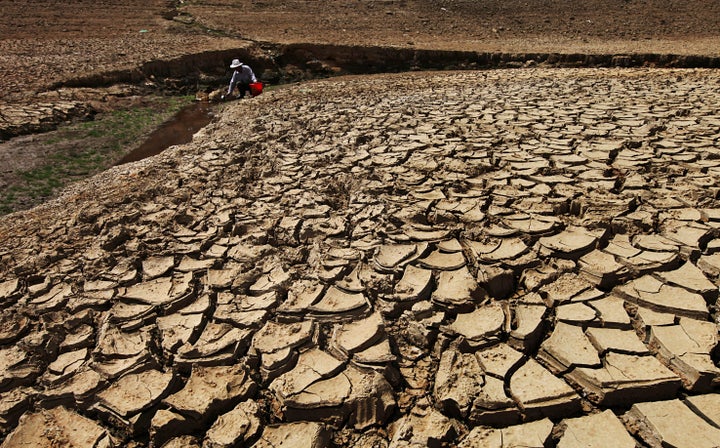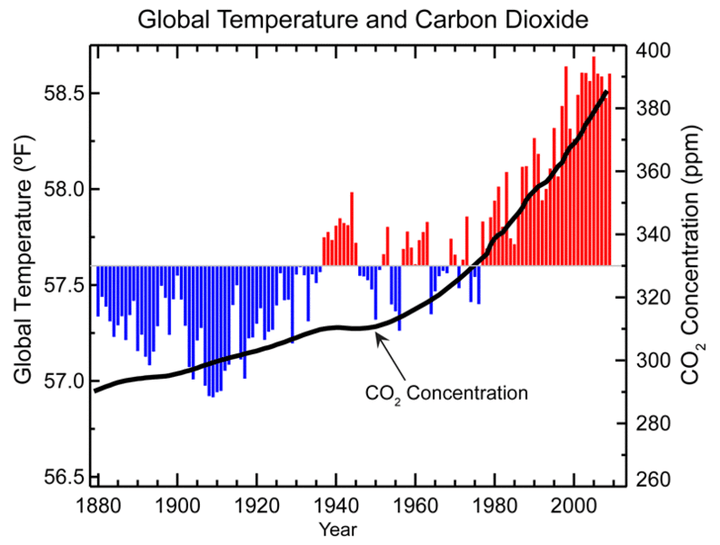The world has hit a global warming milestone it may never recover from.
Scientists at the Mauna Loa Observatory in Hawaii announced in 2013 that atmospheric concentrations of carbon dioxide reached a daily average above 400 parts per million for the first time in history. CO2 concentrations “haven’t been this high in millions of years,” said scientist Erika Podest at the time. “This milestone is a wake-up call.”
But the situation has only gotten worse. Worldwide, 400 ppm, which indicates the ratio of carbon dioxide to other gases in the atmosphere, started to be read more consistently and in more locations. Last March, global CO2 levels topped the symbolic benchmark for an entire month — a first since record-keeping began. Antarctica, the last place on Earth without a 400 ppm reading, finally reached it in May.
Now scientists say we’ve arrived at yet another critical climate change juncture: CO2 levels surpassed 400 ppm this month— and it may not fall below that mark ever again.
“I think we’re essentially over for good,” said Ralph Keeling, director of the Scripps Institute for Oceanography’s carbon dioxide monitoring program in May.
Keeling explained in a Friday blog post how CO2 levels had consistently topped 400 ppm for the month of September ― typically the time of year when atmospheric carbon dioxide is at its lowest. The Scripps Institute monitors CO2 levels at the Mauna Loa Observatory, the world’s marquee site for carbon dioxide monitoring.
“The low point reflects the transition between summer and fall, when the uptake of CO2 by vegetation weakens and is overtaken by the release of CO2 from soils,” he wrote. “Is it possible that October 2016 will yield a lower monthly value than September and dip below 400 ppm? Almost impossible.”
Though one-off lower measurements could still be read in the coming weeks, Keeling said “it already seems safe to conclude that we won’t be seeing a monthly value below 400 ppm this year ― or ever again for the indefinite future.”
And since carbon dioxide stays in the atmosphere for hundreds, sometimes thousands of years, even the most rigorous climate action won’t dampen this figure. Not this century, anyway.
If CO2 emissions, for example, somehow plummeted to zero tomorrow, carbon dioxide levels “probably wouldn’t change much ... but would start to fall off in a decade or so,” Gavin Schmidt, NASA’s chief climate scientist, told Climate Central. “In my opinion, we won’t ever see a month below 400 ppm.”

The 400 ppm level is more a symbolic number than a “tipping point,” as some have suggested. There isn’t, for instance, a marked difference between the climate impacts of 390 ppm and 405 ppm. But scientists say the psychological effect of the figure is significant.
“When you focus on the fact that it’s moving through thresholds like that, you get an appreciation for how it’s actually changing,” Keeling told The Hufington Post in an earlier interview. “I think people accept the reality that CO2 is rising, but they don’t have a grasp of what it means quantitatively. I hope people remember this moment so that when the hear the carbon dioxide levels are 420 parts per million in a matter of years, they’ll say, ‘I remember when it was 400.’”
Scientists say 420 ppm is in our near future, based on current trends. Carbon dioxide levels are increasing by more than 2 parts per million per year.
“The momentum we’re seeing right now, going upwards, I think is going to easily carry us through 450 parts per million,” Keeling said. “And then I would say even stabilizing before 500 parts per million is probably not going to be very easy.”

Carbon dioxide has been the primary driver of climate change since the industrial revolution. CO2 has caused the Earth to warm about 1.8 degrees Fahrenheit since then ― a shift that’s led to record temperatures, melting ice sheets, extreme weather events and other significant impacts.
